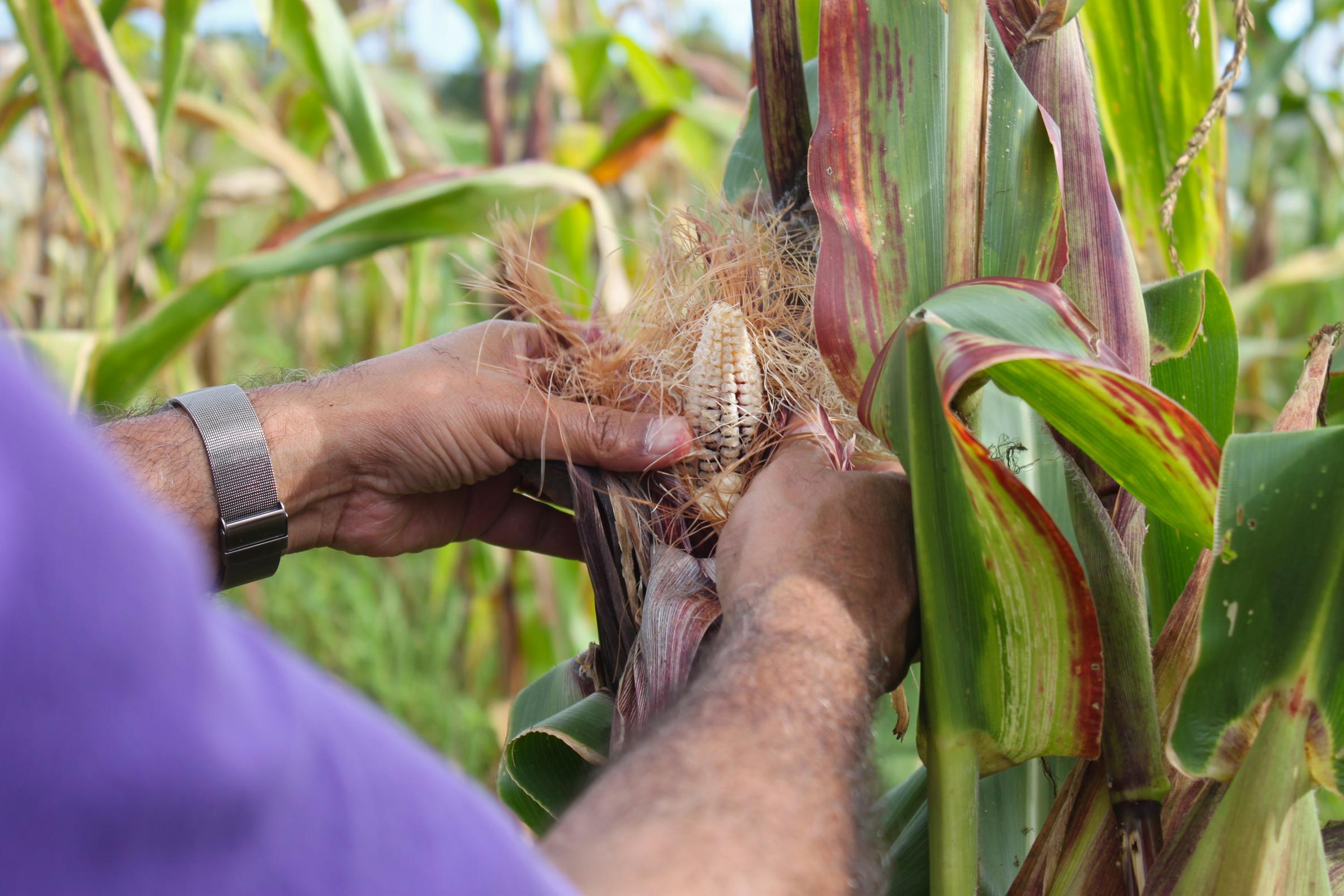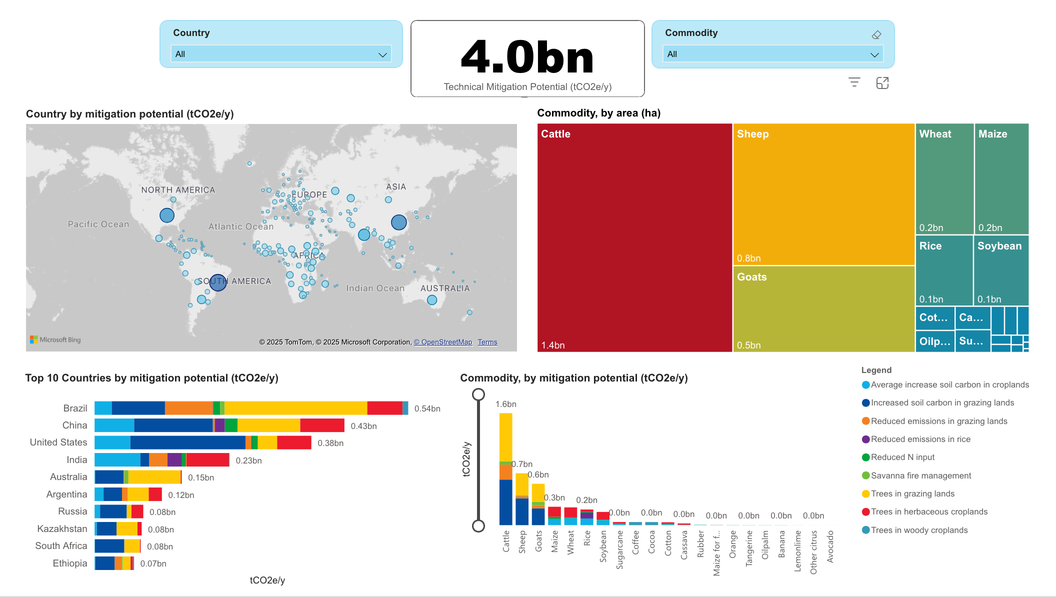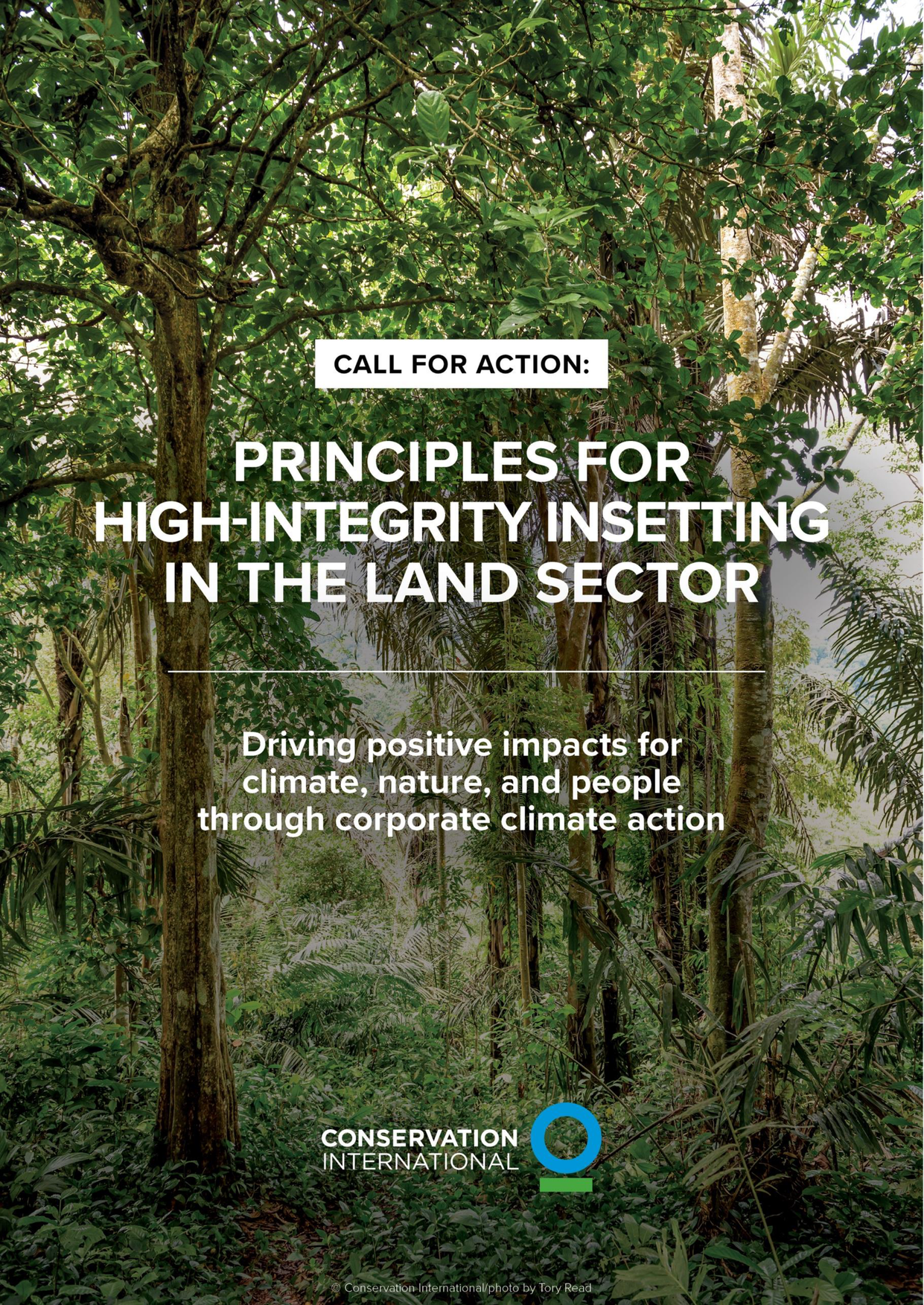
What is “insetting”?
Insetting is climate action taken directly within a company’s own supply chain. Rather than paying for carbon offsets elsewhere, businesses invest directly in the places and people they depend on. This can include restoring soil on farms, planting trees and conserving forests in key sourcing regions. Conservation International is committed to “high-integrity insetting” — creating real, measurable benefits for people and nature, while helping companies meet their climate and biodiversity goals.
Why does insetting matter?
Agriculture, forestry, and other land uses are responsible for nearly a quarter of the world’s greenhouse gas emissions. While over 1,000 agricultural companies have set climate goals, many overlook the potential for nature-based solutions in their plans. New research from Conservation International shows the potential for high-integrity insetting to scale natural climate solutions — cutting supply chain agriculture emissions by up to 68%, while protecting the ecosystems and communities that businesses rely on.

Mapping the Climate Potential
Discover the agricultural areas with the greatest opportunity to drive climate impact.
Principles for High-Integrity Insetting
While insetting has enormous potential, it must be implemented with integrity to deliver real outcomes for people, nature and climate. Conservation International and over 40 partners have developed six principles for high-integrity insetting — creating a shared foundation for credible, effective corporate climate action in the land sector.
Prioritize climate impact
Target actions with the largest emission impact — not just what fits within climate accounting frameworks.
Collaborate in supply sheds and landscapes
Partner with other companies, local stakeholders and communities in shared sourcing regions.
Deliver shared value for people
Respect rights, promote equity and ensure fair benefits across the supply chain.
Deliver positive outcomes for nature
Tackle deforestation, protect biodiversity, and improve water and soil health.
Credible claims
Use standards and reporting that reflect real-world impact and promote transparency.
Efficient MRV
Ensure accountability while minimizing burden on producers and communities.

We encourage companies and partners to adopt these principles, join cross-sector collaborations and help make high-integrity insetting the norm across global supply chains. To learn more or get involved, contact insetting@conservation.org.
Webinar
Watch our launch event to learn more about our work to develop principles for high-integrity insetting and map the global potential.
Conservation International is helping make insetting work — for people, nature and the climate.
Want to learn more? Get in touch: insetting@conservation.org
Frequently Asked Questions
1. What is insetting?
Insetting includes interventions connected bio-physically, ecologically and/or socio-economically to a company’s value chain which generate greenhouse gas emissions reductions and carbon storage.
2. What is High-integrity insetting?
High-integrity insetting creates positive impacts for, and improves resilience of producers, companies, communities, landscapes and ecosystems.
3. Who was involved in developing the principles for high-integrity insetting?
This work was led Conservation International with the support of 3Keel in collaboration with Environmental Defense Fund, the International Platform for Insetting, Proforest, The Nature Conservancy and World Business Council for Sustainable Development (WBCSD). The work was developed based on inputs from more than 100 individuals from more than 40 diverse organizations across the supply chain. At the time of launch, more than 25 organizations have committed to working collaboratively to support the implementation of the principles going forward. See a full list of contributors and endorsing organizations in the full report.
4. How do I get involved or add my organization to the list of those endorsing this work?
Please email us: insetting@conservation.org
5. Why is insetting important for the Forest, Land, and Agriculture (FLAG) sector?
The Forest, Land, and Agriculture (FLAG) sector contributes about 25% of global anthropogenic GHG emissions. Insetting enables companies to reduce emissions and enhance carbon storage within their supply chains, while also improving ecosystem health, community resilience, and long-term supply chain stability.
6. How does insetting relate to beyond value chain mitigation, such as offsetting using verified emissions reduction or removal credits, and Scope 3?
Insetting refers to greenhouse gas (GHG) emissions reduction or carbon removal activities that take place within or in close proximity to a company’s own value chain. These actions are directly linked to the company’s supply chain—biophysically, ecologically, or socio-economically. When implemented with high integrity, insetting can also generate meaningful co-benefits for both nature and local communities.
Beyond Value Chain Mitigation (BVCM) involves supporting GHG reductions or removals outside a company’s value chain. Often referred to as “offsetting or compensation,” BVCM enables companies to compensate for their emissions while contributing to broader global climate goals. The Science Based Targets initiative (SBTi) defines and actively encourages BVCM as a complementary climate action strategy. Some insetting activities are countable toward a company’s scope 3 climate target in line with SBTi and GHG Protocol requirements. However, other insetting efforts—despite being closely connected to the value chain—may not meet the strict boundary criteria set by the GHG Protocol or SBTi. Under current standards, these actions can only be recognized as BVCM. Carbon credits provide a standardized way to quantify and finance GHG reductions or removals. Natural Climate Solution (NCS) carbon credits, in particular, can be used to account for mitigation efforts both within and beyond a company’s supply chain, making them valuable tools for both insetting and BVCM strategies.
For more detailed guidance, see Section 4 of the report.
7. How does the corporate carbon accounting for Natural Climate Solutions crediting projects and insetting differ in terms of ownership, boundaries, and reporting frameworks?
Natural Climate Solutions (NCS) carbon projects can either be within or beyond a company’s operations and/or supply chain. company purchases project credits which represent tonnes of CO₂e reduced or sequestered. These companies would report their Scope 1, 2, & 3 emissions and use NCS credits to achieve their reduction targets – NCS credits are shown as separate line item in their GHG accounting.
Some insetting projects occur within a company’s Scope 3 emissions and are directly counted in the company’s footprint. These projects generate emission reductions or carbon removals in the company’s own value chain, generally in the agriculture sector, not outside of it. Other insetting projects are connected bio-physically, ecologically and/or socio-economically to a company’s value chain but may not fall within their scope 3 boundaries. Natural Climate Solutions (NCS) carbon projects can be implemented either within a company’s operations and supply chain or beyond them. Companies purchase NCS credits, each representing a tonne of CO₂e reduced or removed from the atmosphere. These credits are reported separately in greenhouse gas (GHG) accounting and can be used to support a company’s progress toward its Scope 1, 2, and 3 emissions reduction targets.
Insetting projects, by contrast, typically occur within a company’s Scope 3 emissions boundary and are directly integrated into its value chain—most commonly in the agriculture sector. These projects generate measurable emission reductions or carbon removals that are counted within the company’s own carbon footprint.
Some insetting initiatives may also be biophysically, ecologically, or socio-economically linked to a company’s value chain, even if they fall outside the strict boundaries of Scope 3. These projects still contribute to climate and sustainability goals but may be accounted for differently depending on the reporting framework.
See section 4 of the report for more detail on this topic.
8. Can companies claim GHG reductions from insetting projects under current standards?
It depends. Current GHG accounting frameworks (especially GHG Protocol and SBTi) set strict boundaries regarding what counts towards a company’s GHG footprint and what can count towards its GHG targets. Insetting includes a set of actions within and beyond these boundaries. Accordingly, some insetting actions are claimable under these rules, especially if they occur outside narrowly defined value chain boundaries. In our report, we discuss four key boundaries in detail (traceability, proximity, allocation and attribution) and suggest changes in key standards (including SBTi’s Net Zero Standard) to address this challenge. See section 4 of the report for a more detailed discussion.
These boundaries can create a disconnect between what an average person may think is considered “within value chain” and what counts towards a company’s scope 3 target. For example, if a company buys just one of multiple crops that a farmer produces and supports that farmer to reduce and remove emissions on farm through regenerative agriculture practices and sequester carbon through restoration of areas on and adjacent to the farm, the company would likely only be able to claim a small fraction of the impacts of these actions in their Scope 3 footprint. Further, due to dynamic and complex global supply chains, many companies don’t have the traceability required to invest in any “countable” actions in their supply chains. While establishing clear boundaries is important to ensure transparent action by companies and limit the risk of greenwashing, they can also stymie action by limiting where companies can invest and the business case for their investments.
9. What are “near value chain” actions and why do they matter?
These are emissions mitigation interventions that may not count towards scope 3 targets under current GHG accounting guidelines but are still closely connected to a company’s value chain. Examples include restoration projects in adjacent landscapes or actions in shared sourcing regions. The report advocates for clearer recognition and incentives for these actions. See section 4 of the report for more detail.
10. How does insetting support a just and nature-positive transition?
By involving local communities and Indigenous Peoples in project design and implementation, insetting can:
- Respect & enhance land and human rights.
- Promote gender equality and fair labor.
- Enhance biodiversity and ecosystem services.
- Support sustainable livelihoods and resilience.
See principles 3 and 4 in section 6 of the report for more detail.
11. Where can I find more resources or support to implement high-integrity insetting at my company?
Section 6 of the report clarifies the intent and challenges for each principle, as well as case studies. Section 7 details recommended actions and links to work ongoing to support the principles by companies, project developers, civil society, and standards developers. Interested to partner to deliver high-integrity insetting in your supply chain? Get in touch at insetting@conservation.org.